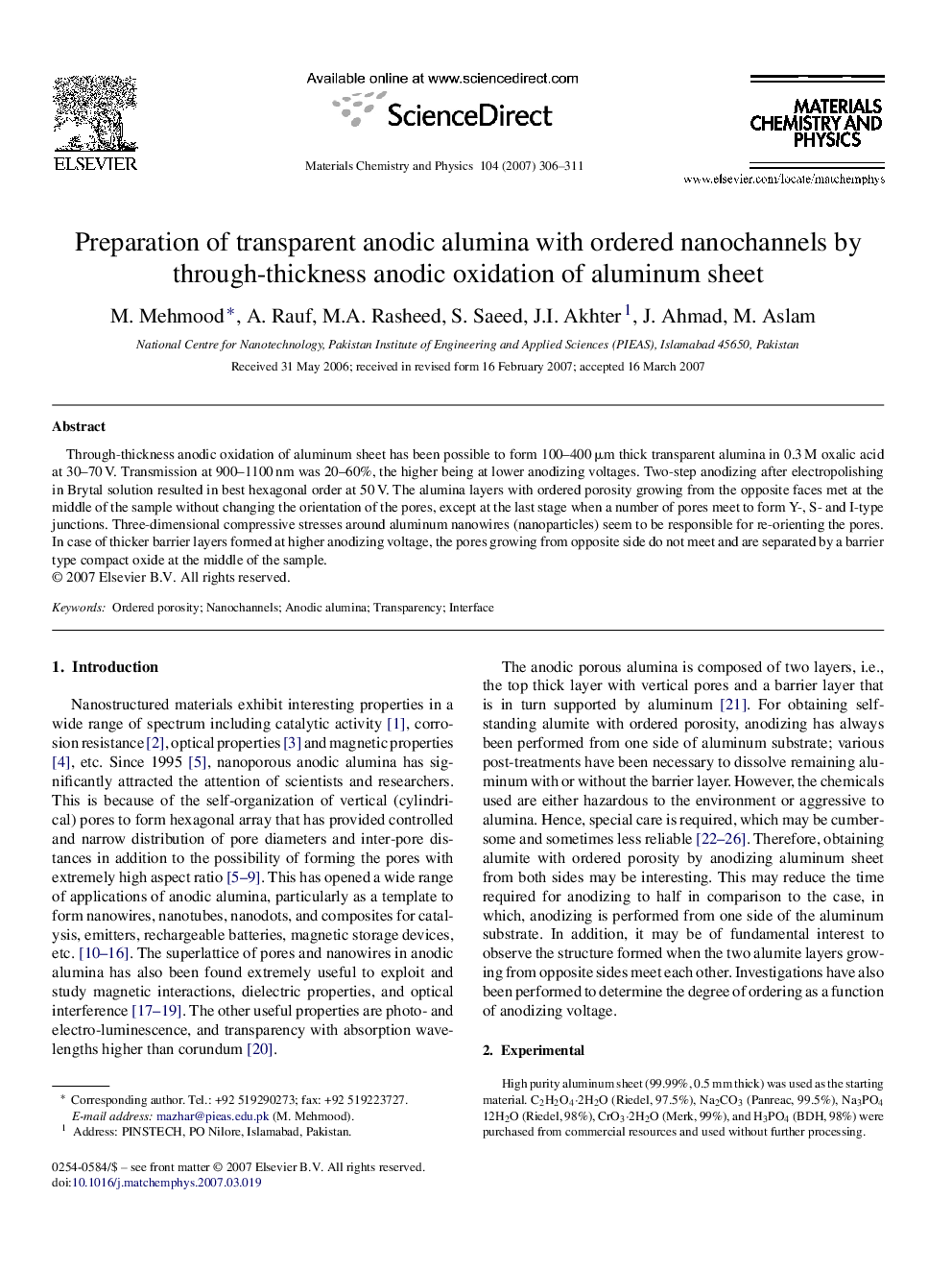| Article ID | Journal | Published Year | Pages | File Type |
|---|---|---|---|---|
| 1527278 | Materials Chemistry and Physics | 2007 | 6 Pages |
Through-thickness anodic oxidation of aluminum sheet has been possible to form 100–400 μm thick transparent alumina in 0.3 M oxalic acid at 30–70 V. Transmission at 900–1100 nm was 20–60%, the higher being at lower anodizing voltages. Two-step anodizing after electropolishing in Brytal solution resulted in best hexagonal order at 50 V. The alumina layers with ordered porosity growing from the opposite faces met at the middle of the sample without changing the orientation of the pores, except at the last stage when a number of pores meet to form Y-, S- and I-type junctions. Three-dimensional compressive stresses around aluminum nanowires (nanoparticles) seem to be responsible for re-orienting the pores. In case of thicker barrier layers formed at higher anodizing voltage, the pores growing from opposite side do not meet and are separated by a barrier type compact oxide at the middle of the sample.
